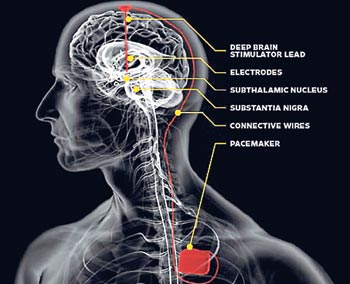A tremor can be described as an involuntary rhythmic muscle movement of one or more body parts. It can affect the hands, arms, head, face, vocal cords, trunk and legs. The hands are most commonly affected.
There are many causes for tremors, some harmless, others due to an underlying medical condition. If they persist, it is always worthwhile consulting a doctor to rule out an underlying problem.
Causes:
- Runs in the family
- Variety of medications
- Stress, anxiety or tiredness
- Normal aging
- Low blood sugar
- Excess alcohol
- Medical conditions such as Parkinson’s, Multiple sclerosis, over active thyroid and brain tumours
Types of tremors
Essential tremor: This is the commonest type of tremor, usually occurring after age 40, although symptoms can appear at any age.
Essential tremors are not associated with any known pathology but may affect your day-to-day activities. It mainly affects the hands and can be worsened by stress and anxiety.
Physiological tremor: This is a fine tremor that worsens with anxiety and exhaustion. It can be due to changes in temperature (such as fever), low blood glucose, infection, alcohol withdrawal and high thyroid hormones in the blood.
Psychogenic tremor: Also called hysterical tremor. Characteristics of this tremor may change and it also disappears when the patient is distracted. Normally these patients may have an underlying psychiatric condition.
Parkinson’s tremor: Normally found in those over the age of 60 years, this is caused by damage to the structures of the brain which control movement. It is worsened by stress. This is normally a start to Parkinson’s disease.
Cerebellar tremor: This is where the tremor is caused by destruction of part of the brain called the cerebellum. This area is mainly involved in coordination of movement of the body.
How is it diagnosed?
A doctor will first need to get a thorough history of the patient to guide the doctor towards a final diagnosis and to organise the appropriate investigations.
A thorough neurological exam will also be carried out. Routine tests including blood and urine tests may pick up conditions such as diabetes, thyroid disease and levels of medications used. A scan of the brain maybe carried out to rule out a structural cause for the tremor .
Unfortunately treatment for most tremors is limited.
Treatment
- Stop medications or alter those causing tremors
- Parkinson’s tremor can be controlled with the drugs used for the condition
- Essential tremor responds to drugs known as beta blockers and sometimes those used for seizures. Sometimes a small drop of alcohol helps
- There is no treatment for cerebellar tremors
- Psychogenic tremors can be helped with counselling and therapy
- Enhanced physiological tremor is usually reversible without treatment
Surgical Treatment
Recent advances in brain surgery have given rise to two surgical procedures for the treatment of tremors.
Thalamotomy: In this technique, a part of the brain called Thalamus is purposefully damaged. It is effective in patients with essential, cerebellar and parkinsonian tremors.
The surgery is carried out in hospital under a local anaesthetic with the patient awake so that the patient’s speech, language and coordination can be monitored. An electrode is passed down through a small hole in the skull. When the exact area causing the tremor is isolated, a small current is passed through which causes selective damage.
Deep brain stimulation: This is another technique which uses implantable electrodes, which send impulses to the thalamus. The patient uses a hand-held magnet to turn off a pulse generator which is surgically implanted under the skin. The electrical stimulation disables the tremor. This technique can be used for parkinsonian and essential tremors.
Although these operations are available, the risk of having brain surgery should be considered seriously. Surgery should be a last resort when all other medical avenues have failed.
|

